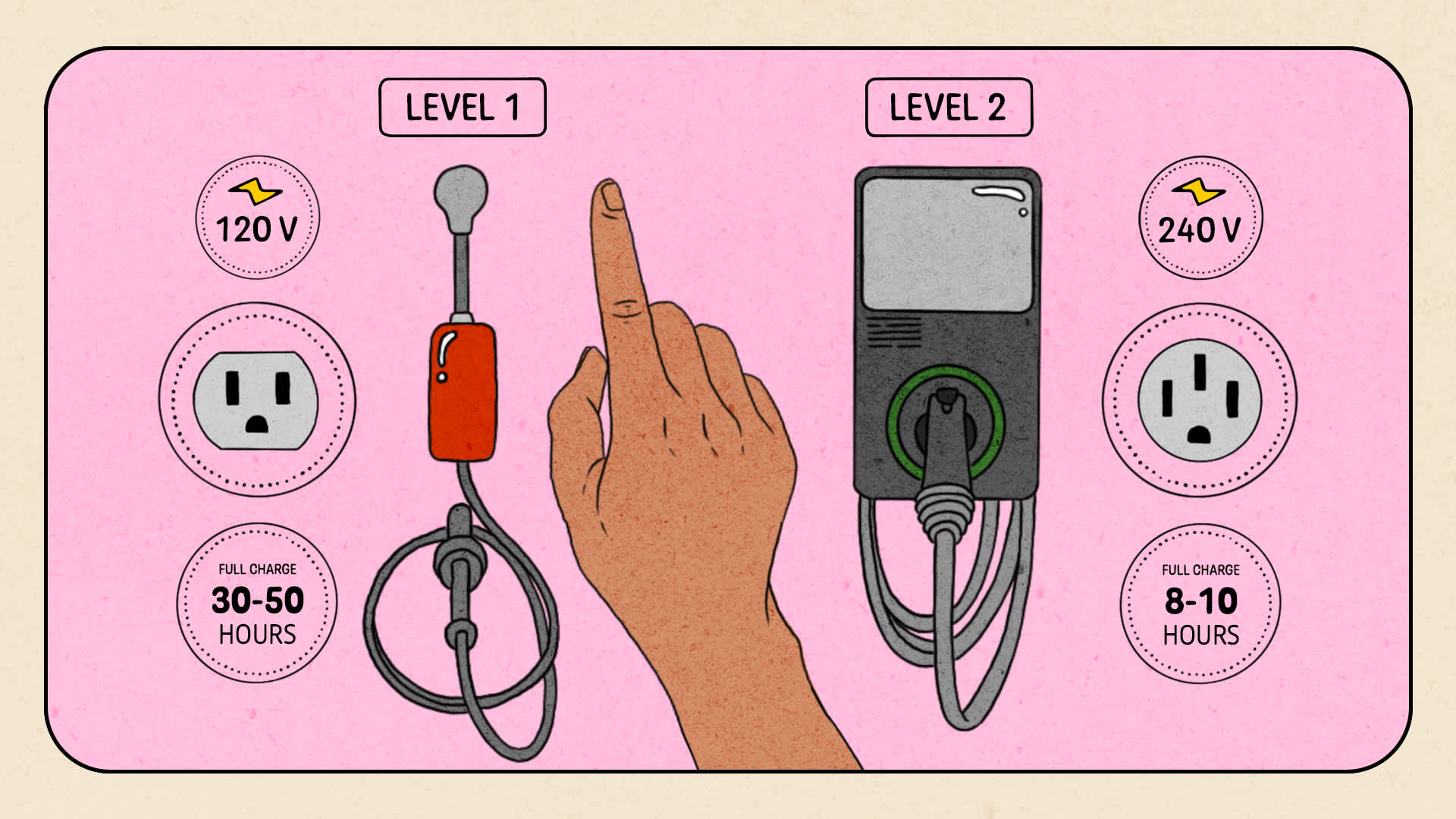
No matter the EV model, charging overnight (or during your workday) will be the best way to get your money’s worth out of an EV. So, before you get too into the EV weeds, make sure you can have access to a charger while you work or sleep.
That could get tricky for renters. While a few lucky people may have access to chargers at their office or apartment building, most don’t — so if you’re in the unlucky majority, it may make sense to start appealing to your building management now.
If you own a single-family house, you’ll have much more control. And what most people don’t realize is that as long as you have access to a standard 120V outlet, probably within 10 or 15 feet of where you park your vehicle, you can charge directly. (Nearly all EVs come with a dedicated 120V charging cable.) It’s important to remember that while this is the cheapest way to add electrons to your EV, it’s also the slowest. Commonly referred to as Level 1 — or “trickle” — charging, most 120V outlets will add between 3 and 5 miles of range per hour to your vehicle. If your car sits idle for 10 to 12 hours every night — when electricity rates tend to be lowest — and you can leave it plugged in for a significant portion of the weekend, this may be enough for your needs. It may also be your only option if you’re charging at an apartment building.
Of course, you can choose to add a dedicated 240V outlet for Level 2 charging, which allows for an average of 25 miles of range per hour. There are all kinds of charging stations to choose from — some are boxy and mount directly to a wall in your garage or on the exterior of your home; some are designed to be more portable and simply plug into 240V outlets; some come with “smart” options that let you view your charging history and schedule charging sessions at specific times of the day. The thing to keep in mind is cost. Charging stations themselves can run between $300 and $1,000. You’ll also need an electrician to install that 240V outlet. That can cost anywhere from $250 (if you already have a dedicated 240V circuit) to as much as $2,000 (if you live in a market with higher labor costs). And that’s in addition to the $2,000 to $4,000 nearly half of all homeowners can expect to pay in order to upgrade their home’s electrical panel to accommodate a Level 2 charging station. Finally, before you make any decision on charging, it’s a good idea to download apps like EVgo, ChargePoint, Electrify America, and PlugShare to get a sense of what public chargers are in your area and along routes you frequently travel. Navigation apps like Apple Maps, Google Maps, and Waze can also give you a sense of local and regional charging options. Keep in mind that charging on the road at public chargers is usually far more expensive than charging at home.
Also in this series:
The content provided in this series is for informational purposes only. Lyft makes no representations as to the accuracy and completeness of this information. Unless otherwise stated, Lyft is not affiliated with any businesses or organizations mentioned in this series.